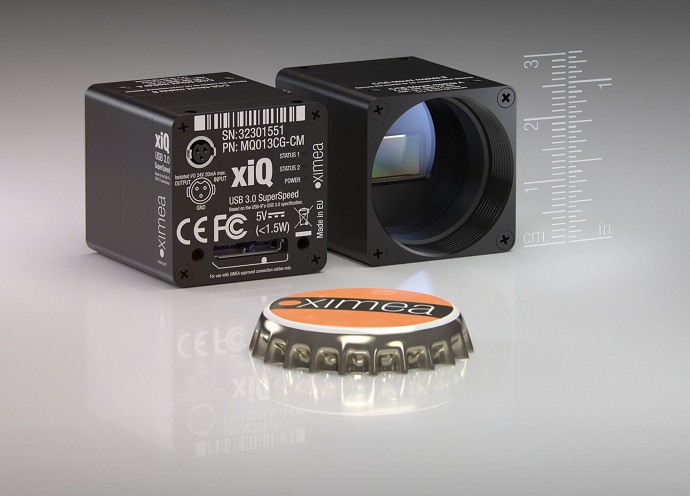Imec Technology Forum—BRUSSELS (Belgium)— June 6, 2014 —Nanoelectronics research center imec and XIMEA, a progressive creator of machine vision systems, announced their partnership in integrating imec’s Hyperspectral Imaging (HSI) sensors together with XIMEA’s xiQ USB3.0 camera product line. Exceptional interoperability between camera and sensor’s technology streamlined the success of this integration.
Combining imec's hyperspectral sensor with XIMEA’s impressively compact xiQ cameras is a new milestone for us. The high-speed USB3.0 interface includes power supply over USB that removes the need for expensive and bulky frame-grabbers and separate power supplies. It will enable our partners to design and mass-produce extremely compact hyperspectral imaging camera solutions” stated Andy Lambrechts, program manager for imaging & vision systems at imec.
By applying narrow-band spectral filters at pixel-level using semiconductor thin-film processing, imec’s technology enables hyperspectral image sensor solutions with extreme compactness, low weight, high reliability and proven capabilities to be mass produced at low cost in volume. Three types of standard spectral image sensor designs are today available: 100 bands linescan design, 32 bands snapshot tiled design, and a new snapshot mosaic designs featuring 16 bands in a matrix of 4x4 per-pixel filters.
XIMEA coupled imec’s hyperspectral sensors to its xiQ camera product line which features exceptional form factor with unmet specification today for the hyperspectral imaging space: xiQ cameras feature 26.4 x 26.4 x 21.6 mm total dimension and weight of mere 27 grams. With its xiQ series cameras, XIMEA can proudly claim the title of world’s smallest industrial USB3 Vision and hyperspectral imaging camera. XIMEA achieves this ultra-compact footprint by using a single planar rigid board construction as opposed to competing multi-board and multifold flexi-rigid PCB construction, making the xiQ easier to integrate into specialized equipment and OEM designs. XiQ cameras consume only 1.8 W, easing the power and thermal management design challenges of UAVs for example.
“Hyperspectral imaging is not new in the world of high-end remote sensing instruments such as satellites and airborne systems. We are excited by this new partnership with XIMEA as it will bring this unique technology into the hands of the numerous drone and UAVs companies that want to fly compact multispectral / hyperspectral imaging cameras to serve the emerging precision farming industry” added Jerome Baron, Business development manager of imec’s imaging activities.
According to Max Larin, CEO of XIMEA, “This cooperation effectively presents the smallest, lightest, least power consuming and most cost effective solution in hyperspectral field today”.















